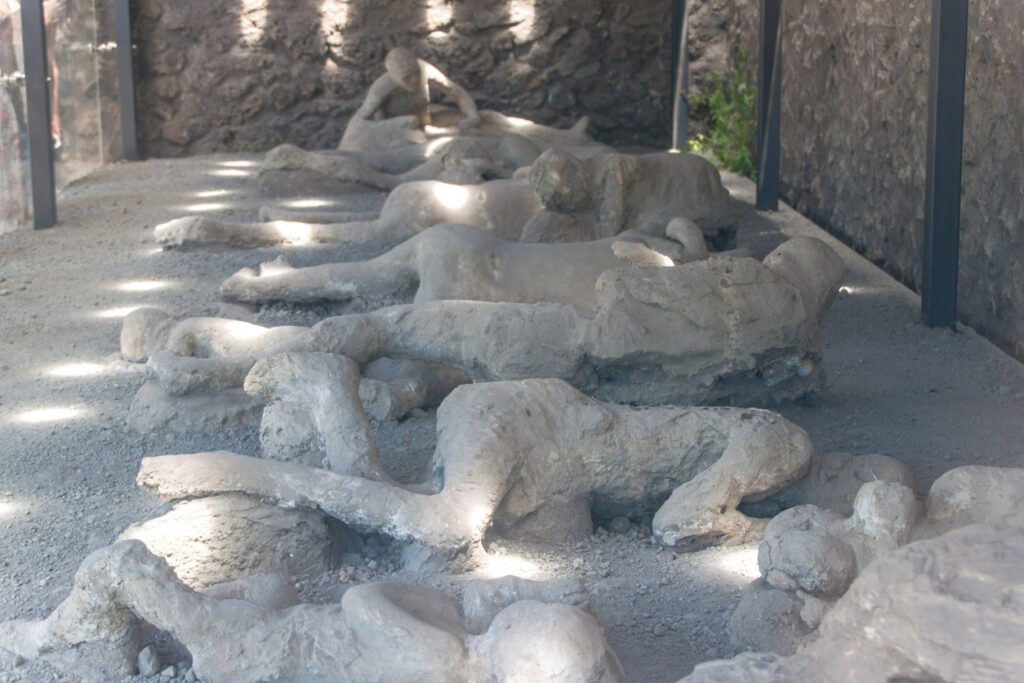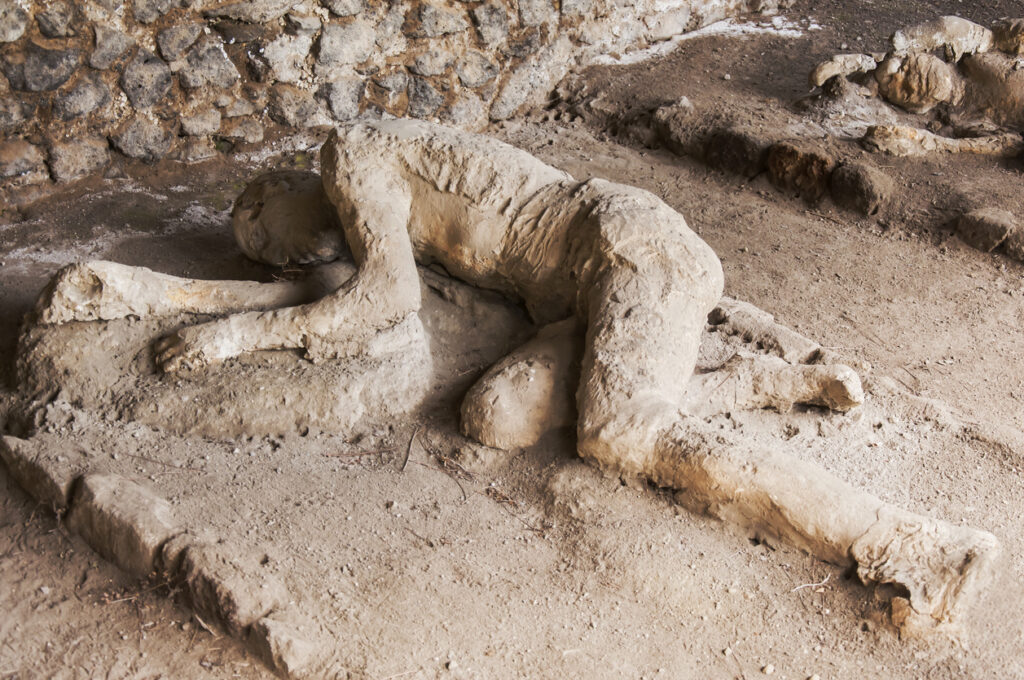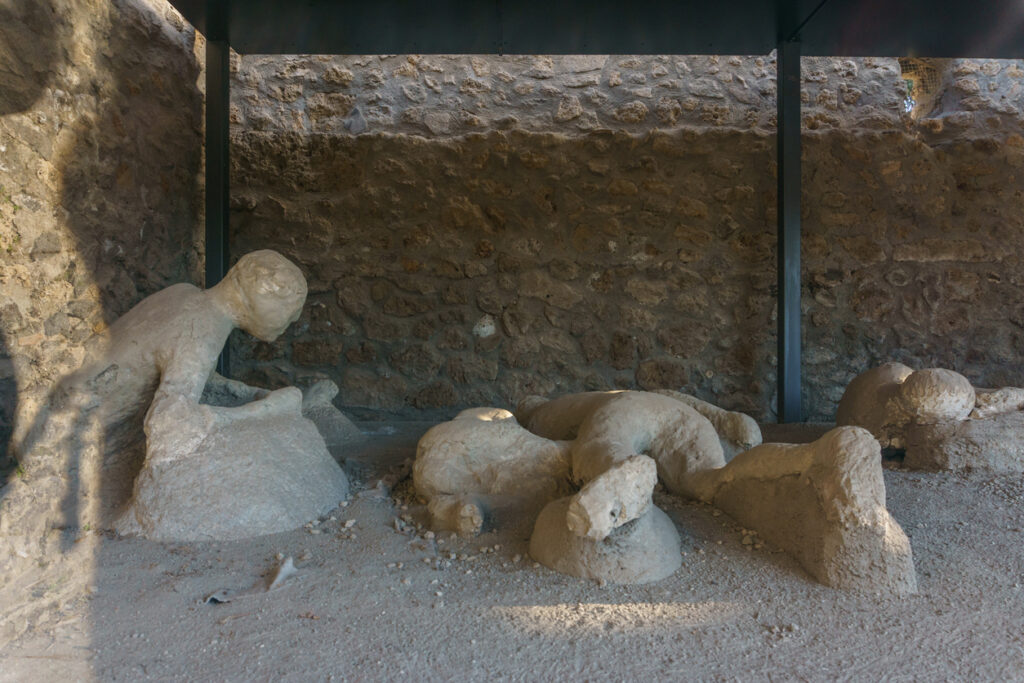
When people think of Pompeii, they usually picture tragedy frozen in time — bodies preserved in ash, homes swallowed up by volcanic fury, and a city brought to an instant end. However, the full story isn’t quite so final. While the eruption of Mount Vesuvius in 79 AD was catastrophic, it wasn’t instantly fatal for everyone. In fact, a surprising number of people escaped, rebuilt, and lived to tell the tale, even if history doesn’t always focus on them. Here’s what we know about who survived, how they did it, and what happened next.
Most of Pompeii’s residents actually survived.
The death toll in Pompeii is estimated to be around 2,000, but the city had a population of 15,000 to 20,000. That means the vast majority managed to flee before the deadliest part of the eruption hit. Early ashfall gave them a small but critical window to escape.
It’s easy to forget that those who lived didn’t leave behind dramatic evidence—no ash-covered body casts, no eerie ruins, just silence — and survival. That’s why the survivors are often left out of the story.
People fled early, during the ash fall.
When the eruption began, it wasn’t the instant firestorm we often imagine. The first phase involved pumice and ash falling from the sky — terrifying, but not immediately fatal. People had hours to pack up and leave before the pyroclastic flows came through. Those who recognised the danger and didn’t wait to see what happened next had a real chance. It was the people who stayed behind, whether out of hope, fear, or obligation, who got caught in the second wave.
Some survivors rebuilt their lives elsewhere.
Surviving Pompeii didn’t mean going back. Most survivors ended up in nearby Roman towns like Naples or Cumae. Some inscriptions even show Pompeiians proudly calling themselves “Pompeianus” in other cities years later. Life after the eruption wouldn’t have been easy, but it wasn’t the end of the road. Families relocated, adapted, and found new communities. The city was gone, but the people carried their identity with them.

Pliny the Younger’s letters offer a survivor’s view.
Seventeen-year-old Pliny the Younger watched the eruption from across the Bay of Naples. His uncle, Pliny the Elder, died trying to rescue people, but Pliny survived and later wrote about what he’d seen. His letters are the most detailed first-hand account of the disaster — proof that not everyone was swallowed by the ash. They offer a rare perspective from someone who lived to reflect on it.
Herculaneum had survivors, too.
Pompeii’s wealthier neighbour, Herculaneum, is often thought of as a total loss because hundreds of bodies were found in boathouses. However, many people did escape, probably by sea during the early stages of the eruption. The tragedy is that those who waited too long were trapped. The lucky ones slipped away before the volcano unleashed its final, lethal waves of gas and debris.
Some families escaped together.
In homes where only one or two skeletons were found, it’s likely the rest of the family got out. The absence of bodies is actually one of the biggest clues that people survived—they simply left no trace behind. Some families probably grabbed what they could, herded their animals, and made a run for it. It wouldn’t have been easy or calm, but it gave them a shot at staying alive.
Archaeology shows Pompeiians tried to react.
There’s evidence that many people in Pompeii didn’t panic straight away. Some tried to wait it out or protect their valuables. Others gathered at landmarks, maybe hoping the eruption would pass. Unfortunately, it didn’t. However, those who made quick decisions, especially those who left during the ashfall, were far more likely to survive. It’s a grim reminder that hesitation, in some disasters, can be fatal.

Survivors kept Pompeii’s legacy alive.
Pompeii as a place was buried, but the culture and community didn’t vanish. Survivors took their language, customs, and even street names with them. Some tried to rebuild businesses or temples in new cities. It’s a subtle part of the story — less visual than the ruins, but just as important. These people helped preserve a Roman way of life that might have otherwise disappeared in the ash.
The eruption changed Roman disaster response.
Vesuvius wasn’t just a regional disaster — it sent shockwaves through the Roman Empire. The sheer scale of destruction changed how Romans thought about nature, divine punishment, and even emergency planning. Future Roman cities were more mindful of where they built and how they structured evacuation routes. The survivors, knowingly or not, influenced that shift simply by living through the worst of it.
Pompeii’s survivors remind us of resilience.
It’s easy to get caught up in the tragedy of Pompeii, and for good reason. However, the other side of that story is resilience. People ran, survived, mourned, and moved on. They made new homes from the rubble of their old ones. We don’t have statues of them, or ash casts, or dramatic ruins, but they existed. Their survival is just as powerful as the destruction we usually focus on.